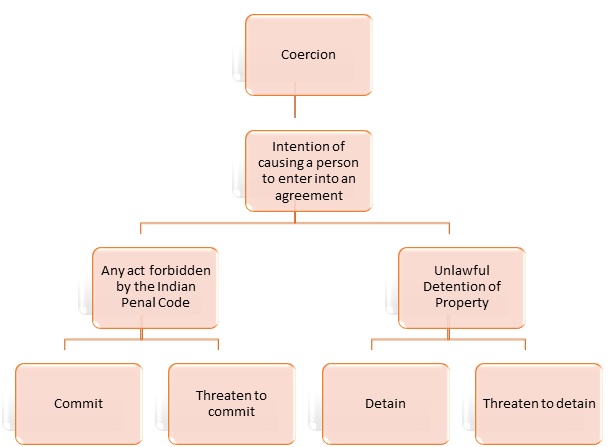SOCIAL SECURITY MEASURES DURING COVID-19 IN INDIA: ANALYSIS, CRITICISM AND SUGGESTIONS
( I ) INTRODUCTION
“To
constitute India into a Sovereign, Secular, Socialist, Democratic, Republic”
The finest words of the Constitution of India embody the principle of social welfare, i.e. the word “Socialist”.
Framers of the constitution could have anticipated the need for social welfare
at that time and in upcoming India. Being a developing country with a
population of around 1.3 billion people, half of which are still poor and living
in rural areas, the concept of social welfare and security alarms the mind of
the policymakers as the key aspect in the development of the country. Novel
coronavirus disease or COVID-19, as quoted can be explained as a horrible dream
for the working population in India. COVID-19 was declared a Public Health Emergency of
International Concern and Pandemic all over the world on March 11, 2020.
And soon after that, the Ministry of Home Affairs imposed lockdown in the whole
country on March 24, 2020, with unpreparedness at its peak. This fragile step led to medium and long-term implications degrading the
economy, stopping all the industrial work, transportation, and other significant
sectors producing national income. Though the government arranged camps for the
workers and provided them with food and other necessities, they could not stay
there longer because the feeling of home was more fascinating and compelling in
such a chaotic environment around the globe. The migration of workers to their home
town drive along with its concerns regarding social security, livelihood and
welfare of workers estimated around 100-150 million.
During this period of the last 9 months of
lockdown, the worst destructive effects were not due to COVID-19 but the government’s response towards the COVID-19 situation. Other than its sole purpose of
stopping the virus, the stringent lockdown logged the economy into its worst phase
and forced millions of workers into poverty and hunger. India was at its
highest unemployment rate comparatively since the last 4 decades as the
prolonged lockdown had implications of massive joblessness and living crises
for daily wagers who formed a substantial section of workers of the unorganised
sector in India. COVID-19, combined with the Indian government’s response, can be
termed the
fall of the economy and humanitarian catastrophe.
Restrictions and preventive measures taken
by the government of India were among the most stringent or strictest in the
world. According to the “COVID-19:
Government Response Stringency Index, May 7
( II ) SOCIAL
SECURITY MEASURES DURING COVID-19
To overcome the severe implications of COVID-19 and
pro-active lockdown, the government of India took the following steps in order
to combat the sufferings of the workers
v The Ministry of Labour and Employment sent orders to all the States
and Union Territories to support workers in the construction sector, which is
estimated to employ the highest portion of migrant workers, from “Building &
Other Construction Workers “Cess Fund”. Thereafter Rs. 5000 crores have been
released from “Building
& Other Construction Workers Cess Fund” supporting around 2 crore
construction workers.
v For resolving grievances of migrant workers during the lockdown, the Ministry had set
up 20 Control Rooms all over the country.
v After the lockdown, “Pradhan Mantri
Garib Kalyan Yojana” having a financial lot of Rs. 1.7 lk crore was
launched to help poor, needy and unorganised sector workers of the country. The government also proposed to provide cost-free food grains up to November 2020
to all the needy beneficiaries. This policy was aimed to ensure that no one is
left behind without food during this challenging pandemic time.
v Per day wages under Mahatma Gandhi National Rural Employment
Guarantee Act, 2005 (MGNAREGA) were enhanced from Rs. 182 to Rs. 202.
v The Government launched PM Street Vendor’s
AtmaNirbhar Nidhi (PM SVANidhi) Scheme to provide collateral-free loans up
to Rs.10,000 for one year to approximately 50 lakh street vendors to
continue their businesses.
v “Pradhan
Mantri Garib Kalyan Rojgar Abhiyan” was launched in around 116 districts in
the country to provide employment to migrant workers who went to their home
town after the lockdown. The government, through this campaign, is planning to
build rural infrastructure with the involvement of migrant workers and about
Rs. 50,000 crores have been sanctioned for this purpose. Similarly, many
projects involving migrant workers were initiated to construct Roads,
Highways etc. by the Transport Ministry, aiming for employment generation for
migrant workers.
v 20 lakh crore financial assistance under
“Aatm Nirbhar Bharat” was sanctioned, prioritising the creation of employment
opportunities for migrant workers and workers of unorganised sector,
eventually strengthening MSME Sector and promoting rural economic development.
v In order to provide minimum financial assistance to the workers
through their EPF Account, “Ministry of Labour & Employment under Pradhan
Mantri Garib Kalyan Yojana” authorised all the EPF (Employee Provident Fund)
members to withdraw almost 75% of their total provident fund. This policy was
initiated to provide financial assistance to jobless workers through their EPF
account.
v For facilitating migrant workers who were returning back to the
working state, “Ministry of Labour & Employment” issued Advisory Guidelines
for all the States and UTs on July 27, 2020, “to nominate a State Level Nodal
Officer to coordinate the implementation of various measures for the welfare of
migrant workers who are coming back for employment.” Further, the States were
also instructed to coordinate for screening and
testing of migrant workers according to the protocol prescribed by the
Ministry of Health & Family Welfare.
( III ) Evaluation Of Relief Measures Taken By
Government Of India
In my opinion, just looking at the relief
measures executed by the government to facilitate social security among workers
in India probably won’t give a real and detailed analysis of the relief
measures. Is the government honestly working to fulfil its responsibility
during this pandemic time? Have the policies framed been able to assist and
provide help to workers migrating to their native places? Have the measures and
action plan framed for social security of the working population of India
worked out in the manner it was expected? These are some of the questions for
which answers need to be sought to provide a true opinion about the government
relief measures and whether they were sufficient.
Even after adopting the strictest
preventive measures to control COVID-19, the results were not satisfying and
failed to meet expectations. At the beginning of the lockdown, i.e. March 25, there were only 320 active cases of COVID-19 in India, mostly confined to some
remote areas, and only 10 deaths were recorded due to the virus. Looking at
these numbers and comparing them to the immense population of 1.3 billion, it
was plausible that India could have been capable of combating the virus after
implementing such a stringent lockdown. But, escalating towards the end of
June, India was the third-worst affected country in the world from COVID-19.
And soon overtook Brazil and the USA, with around 30,000 new positive cases reported every day. The
virus spread exponentially even after the stringent lockdown. This resulted in
further extension of lockdown and suffering for the working population.
v Talking about the policies or relief measures framed by the
government to support workers and other needy people, they lacked humane
imagination in their framing. Sanctioning of a large amount of money does not in
itself emphasis the welfare of workers. The primary issue that hinders the success
of these policies is their improper implementation. A substantial population
remains out of the purview of their relief measures due to a lack of proper
implementation. During the whole lockdown, I have seen many farmers and
workers coming bare hands from the ration shop because their names could not
appear on the list of beneficiaries. This is the part the government should
have focused more on than just showing off lucrative amounts and proposing some
fantasied activities like “thali bajao” and all.
v The relief package of 1.7 lakh crores announced under “Pradhan
Mantri Garib Kalyan Yojana” was not sufficient to meet the needs of around 150
million jobless workers. Let’s just be straight the government announced a package of 1.7 lakh crore, and we all know how much it will come down into
the real world going through all the bureaucracy and corruption. Then we are
talking here about workers among whom 95% belong to the unorganised sector and had a daily wage system. Thus these workers had no chance other than drawing out of
their savings or borrowing. The package amounts to only 0.8% of the GDP and
therefore won’t do much to counter the steep decline in the income of the
destitute workers. And the scheme merged with many other ongoing schemes than
to the amount is still inadequate to meet the requirement. The total of all the
additional public spending proposed by the government at the end of May amounted
to only 1% of the total GDP, and a substantial part of it has not reached the
people.
v Another insufficiency that slams the free food distribution policy
of the government was lack of transportation or arrangement of proper means of
transporting those free 5kg wheat/rice to needy people. The government should
have been mindful while framing such relief measures. There were around 77
million tons of food grains with the Food Corporation of India, which amounted
to three times the buffer stock requirement. The government could have
increased the distribution of free food grains instead of letting
them rot in warehouses.
v Increase in daily wages of MNERGA seems to be a spurious relief
measure as it won’t help farmers in any sense during the lockdown. As it will
definitely take months to come into force, and on the other hand, execution of
MNERGA during lockdown could not have been easy due to the situations where the
working population under this programme fell by
83% due to lockdown. The government should have proposed something else to
directly provide income to the workers.
Polices framed to help workers resume their
work are welcomed in the current scenario. Generating employment opportunities
in rural areas will help the worker to stay home and have a job at the same time.
But all this could only be possible if all these relief policies are implemented
in a proper and dedicated manner. The government should monitor the activities of
local authorities in the implementation of
all the proposed relief measures.
“The rate of
hunger and distress exceeded the rate of relief”
( IV ) Suggestion
Regarding Proper Implementation Of The Social Security Measures In India
The Government of India is a
community of intelligent people and expertise, having knowledge and skills far
from comparison with an undergraduate law student. It cannot be possible that
they haven’t explored an area to properly implement social security measures in
the light of the welfare state. But, there are still some loopholes due to which
the objectives of Social Security Measures remain unfulfilled. Being a
socialist backed democracy the government is bound towards the welfare of its
citizen. Social Security measures adopted in India are aimed to help workers at
their workplaces, uplifting of women, and support aged once and have
provisions of both entitlement and enforcement.
v To combat the loopholes
in the proper implementation of the Social Security Schemes the following reforms
are suggested:-
Ø One of the foremost reasons for unfulfilled objectives and improper
implementation of social security measures is the lack of universalisation of
all the policies and schemes. Due to the immense size of population, it is very
much plausible that a substantial part of the needy and poor people remain
unrevealed to social security measures. The constitution treats everyone the
same and it’s the duty of the government to bring welfare and benefits to each
and every person in the country. With most of the workers and other
beneficiaries living in rural areas, it is important that people are made aware
of government policies and registered as beneficiaries. Although there are
various social security schemes, they are often
beyond the reach of those who need them the most. The reason being improper
communication of government schemes to the remote areas of the country and lack
of willingness or spirit of public administration to spread out these measures.
This is the most severe impediment towards proper implementation of social
security measures and to cope-up, the government should implement its policies
with the surety of bringing abandoned populations into their policy coverage.
Apart from just publishing policies in the official gazette, ‘know your rights
fares’ should be organised and those who are aware of such policies should take
it as their responsibility to let others know about the same.
Ø The government should expand its coverage to succeed in the universalisation of its Social Schemes. Some of the measures to improve
universalisation can be noted as removing thresholds and revision wage
ceilings according to changing circumstances. And it should launch a robust
comprehensive registration system for the identification of workers, employers and
beneficiaries and the nodal officers and authorities should take prove active
steps to register every possible beneficiary. The government should try to cover
all types of employment and workers (organised and Unorganised) under its
social security schemes. If people could get to know the incentives they will
be deriving from these schemes then it is more likely that the number of
participants will definitely increase in these measures.
Ø Registering all the beneficiaries into all social security measures
launched by the government seems to be problematic in such a big country. The
reason is that the government has diversified these measures into several schemes,
which could be far more efficient if integrated into a comprehensive scheme.
The government should find a way to integrate all the diversified schemes of
social security. This will help in a better fund allocation, reducing overlapping
between various schemes and policies and even easier for the beneficiaries to
get themselves registered.
Ø Bureaucracy and Red Tapism have been one of the major issues
regarding all government actions. Implementation of Social Security measures in
a better way needs a better and electrified means of implementation of the
schemes. Instead of submitting papers in panchayats and other government officers,
e-mitr shops should be made/open in such areas. This will ensure a better and
faster way of reaching out to needy beneficiaries. It will also be useful in the universal treatment of all the workers and other people regarding funds, laws
and central schemes.
Ø Creation and execution of Social Security measures is not enough in
itself, the government should try to bring up a strong system of a social audit
together with performance audit at the state level. This will be a beneficial step
as it will help in monitoring and inspecting officers at a much lower level and
also make them comply with norms and standards formulated by the government.
And the government should also focus on setting up a proper and efficient
system of Grievance Redressal.
CONCLUSION
Therefore considering all the results and current
situation, in my opinion, the government lacked in fulfilling its duties towards
the general public and especially in the case of workers. It should have been more
diligent and complacent to actually provide relief measures to all the needy
and destitute workers. Instead of framing a varied number of policies, it should
have framed the action plan of direct transfer of money into the accounts of
workers and proper implementation of what was already continuing. The
government should monitor and adhere the activities of all social security
officers to a set of professional norms so that the actual development of workers
could be possible.
“A change from ruling to governing and from welfare orientation to professional-technocratic service orientation is the key”
By
Hrithik Yadav
Hidayatullah National Law University




Comments
Post a Comment